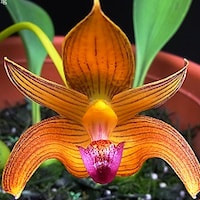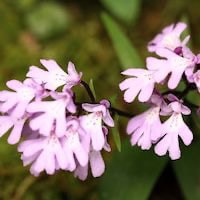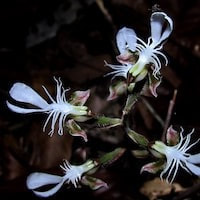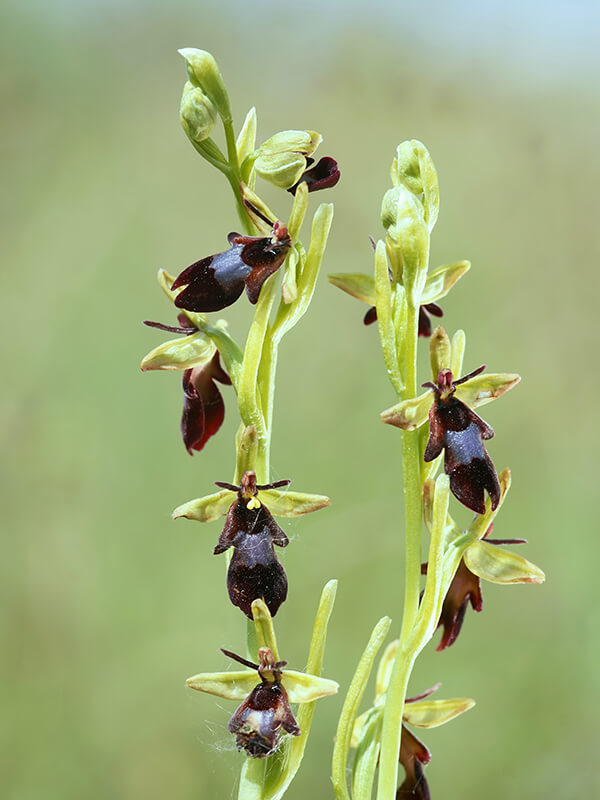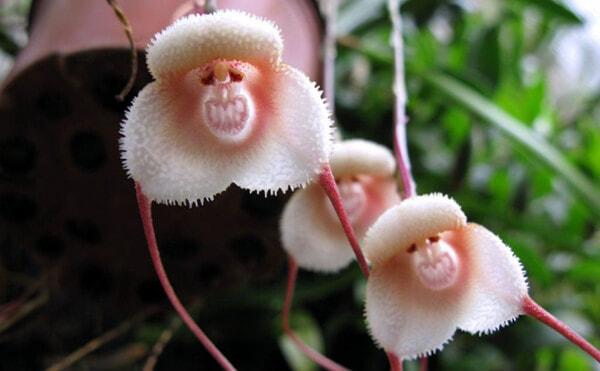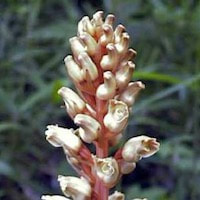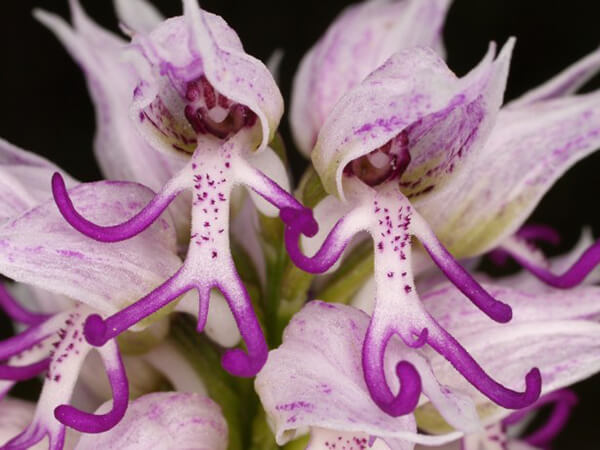Elevate Your Senses with Floral Aromatherapy
This perfume composition incorporates scented notes of various orchids and additional fragrant ingredients. The Native Singaporean Orchid notes feature Bulbophyllum Lobbii, which is used in the Floral 1 (Women) perfume workshop at Scentopia. This orchid, also known as Thailand Bulbophyllum or Sumatran Bulbophyllum, has a fragrance combining jasmine and cucumber. It thrives in warm to hot growing conditions and is named after the plant hunter Thomas Lobb. In Thai traditional medicine, its leaves are employed for burn treatment.
The Therapeutic Orchid notes include several species with medicinal properties. Amitostigma gracile (Blume) Schltr is a small terrestrial orchid found in the Himalayas, China, and Japan. It is utilized in Chinese medicine for detoxification, swelling relief, and hemostasis. Anoectochilus Blume, known as the Jewel Orchid, displays stunning foliage with golden veins and is distributed across Sri Lanka, Singapore, India, and southern China. Cymbidium bicolor Lindl. is found in various regions, including India, Sri Lanka, and the Philippines. Its leaves are employed for treating fractures in southern China.
Cypripedium formosanum Hayata, a terrestrial orchid endemic to Taiwan, is used for enhancing blood flow, regulating the menstrual cycle, relieving pain, and addressing conditions such as malaria, snake bites, and traumatic injuries. Liparis nakaharae Hayata is utilized in Taiwanese folk medicine to treat cancer. Liparis nervosa (Thunb.) Lindl. Syn. Liparis bicallosa (D. Don) Schltr., also known as nerved twayblade or purple star Liparis, has multiple uses in Chinese herbal medicine, including cooling blood, stopping bleeding, reducing lung heat, and alleviating cramps, coughs, and rheumatic pain.
In addition to these orchid notes, the perfume composition incorporates scents of rose oil, carnation, blue poppy, alumroot, cyclamen, desert rose, dahlia, Gerbera, gorse, lotus, mimosa, and marigold. These ingredients contribute to the fragrance's aromatic profile.
The Therapeutic Orchid notes include several species with medicinal properties. Amitostigma gracile (Blume) Schltr is a small terrestrial orchid found in the Himalayas, China, and Japan. It is utilized in Chinese medicine for detoxification, swelling relief, and hemostasis. Anoectochilus Blume, known as the Jewel Orchid, displays stunning foliage with golden veins and is distributed across Sri Lanka, Singapore, India, and southern China. Cymbidium bicolor Lindl. is found in various regions, including India, Sri Lanka, and the Philippines. Its leaves are employed for treating fractures in southern China.
Cypripedium formosanum Hayata, a terrestrial orchid endemic to Taiwan, is used for enhancing blood flow, regulating the menstrual cycle, relieving pain, and addressing conditions such as malaria, snake bites, and traumatic injuries. Liparis nakaharae Hayata is utilized in Taiwanese folk medicine to treat cancer. Liparis nervosa (Thunb.) Lindl. Syn. Liparis bicallosa (D. Don) Schltr., also known as nerved twayblade or purple star Liparis, has multiple uses in Chinese herbal medicine, including cooling blood, stopping bleeding, reducing lung heat, and alleviating cramps, coughs, and rheumatic pain.
In addition to these orchid notes, the perfume composition incorporates scents of rose oil, carnation, blue poppy, alumroot, cyclamen, desert rose, dahlia, Gerbera, gorse, lotus, mimosa, and marigold. These ingredients contribute to the fragrance's aromatic profile.
Download the guided mediation that works best with this Orchid fragrance oil
| women_floral_essential_oil_orchi_00001.mp3 | |
| File Size: | 112282 kb |
| File Type: | mp3 |
Embrace the Feminine Essence
Contains Scented Notes of following in various proportions:
Native Singaporean Orchid notes: Bulbophyllum Lobbii
|
Bulbophyllum Lobbii - Used in Floral 1 (Women) for Team building Perfume workshop.
Bulbophyllum Lobbii is a species used in the Floral 1 (Women) perfume workshop for team building at Scentopia. This orchid thrives in hot to warm growing conditions and is best suited for mounting or planting in a pot with well-draining soil. Known as Thailand Bulbophyllum or Sumatran Bulbophyllum, it is named after the plant hunter Thomas Lobb, who introduced it to England. The fragrance of Bulbophyllum Lobbii is a unique blend of jasmine and cucumber, giving it a distinct aroma. It is worth noting that Bulbophyllum is a parent to numerous orchid species, with over 1800 known varieties. Among them, Bulbophyllum Lobbii stands out as a favorite. In Thailand, the leaves of this orchid are utilized for treating burns. |
Therapeutic Orchid notes:
|
Amitostigma gracile (Blume) Schltr
Chinese names: Xitingwuzhu Lan (slim standing no pillar orchid), Xiewuzhu Lan (slim standing no pillar orchid), Huawuzhu Lan (no pillar/ column orchid) Chinese medicinal name: Duyeyizhiqiang Amitostigma gracile (Blume) Schltr, known by various Chinese names such as Xitingwuzhu Lan, Xiewuzhu Lan, and Huawuzhu Lan, is a small, montane, terrestrial orchid species found in the Himalayas, China, and Japan. These plants are characterized by their small size and spheroid, subterranean tubers. The generic name "Amitostigma" is derived from three Greek words, meaning "not," "thread," and "stigma." In traditional Chinese medicine, Amitostigma gracile has various herbal uses. Here are some recipes:
|
|
Anoectochilus Blume
Chinese name: Jinxian Lan (gold thread orchid) Chinese medicinal name: Jianxianlan Anoectochilus Blume, also known as the gold thread orchid in Chinese (Jinxian Lan) and with the Chinese medicinal name Jianxianlan, is a type of orchid characterized by its beautiful, soft, and velvety foliage. The leaves of Anoectochilus orchids are almost oval in shape and adorned with delicate golden veins, giving them a distinctive appearance. These orchids are often referred to as Jewel Orchids because they exhibit a unique feature of velvety foliage with attractive colored veins. The generic name "Anoectochilus" is derived from the Greek words "anoektos" meaning "open" and "cheilos" meaning "lip," referring to the structure of the orchid. Anoectochilus orchids encompass around 40 different subspecies that are distributed across various regions including Sri Lanka, Singapore, India, and southern China. |
|
Cymbidium bicolor Lindl.
Sri Lankan name: Visa Dhooli (Poison Dust); Beyudhuru (not specific; also used forPholidota imbricata) Cymbidium bicolor Lindl., known by its Sri Lankan names Visa Dhooli (Poison Dust) and Beyudhuru, is an orchid species found in regions ranging from India and Sri Lanka to the Andaman and Nicobar Islands, Sumatra, Malaysia, Kalimantan, the Philippines, and Sulawesi. In traditional herbal practices, the leaves of Cymbidium bicolor are utilized for their healing properties in the treatment of fractures, particularly in southern China. |
|
Cypripedium formosanum Hayata
Chinese name: Taiwanshao Lan (Taiwan spoon orchid), Taiwanpuxie Lan (Taiwan ordinary shoe orchid), Yidianhong (One Spot of Red), Taiwanjiapuxie Lan (Taiwan ordinary shoe orchid) Cypripedium formosanum Hayata, commonly known as Taiwanshao Lan (Taiwan spoon orchid), Taiwanpuxie Lan (Taiwan ordinary shoe orchid), Yidianhong (One Spot of Red), and Taiwanjiapuxie Lan (Taiwan ordinary shoe orchid) in Chinese, is a terrestrial orchid species that is native to Taiwan. In traditional herbal usage, the entire plant of Cypripedium formosanum is valued for its medicinal properties. It is believed to enhance blood circulation, regulate menstruation, alleviate gas, relieve pain, and soothe itching. The root and stem of the orchid are specifically used for expelling gas, improving blood flow, and treating conditions such as malaria, snake bites, traumatic injuries, and rheumatism. |
|
Liparis nakaharae Hayata
Chinese name: Aochunyangersuan Liparis nakaharae Hayata, commonly known as Aochunyangersuan in Chinese, is an orchid species that holds medicinal significance. In Taiwanese folk medicine, this orchid is believed to possess properties that make it potentially useful in the treatment of cancer. While further research and scientific studies are necessary to validate these claims, Liparis nakaharae Hayata continues to be recognized in traditional practices as a potential herbal remedy for cancer-related ailments. |
|
Liparis nervosa (Thunb.) Lindl. Syn. Liparis bicallosa (D. Don) Schltr.
Chinese names: Honghuayanger Suan (red flowered goat eating garlic), Hei Lan (black orchid), Shixiagong (stone shrimp), Banbian Lan (half sided orchid) Roupangxie (crab meat); Lidihao (well grounded); Maocigu (hairy kind aunt); Yanyu (stone yam); Tiepashu (Steel rake); Daoyanti (dangling on the cliff); Zuozicao (moving seed herb); Roulongjian (dragon meat arrow). In Hong Kong: nerved twayblade, purple star Liparis Chinese medicinal name: Jianxueqing Japanese name: Koku ran Liparis nervosa (Thunb.) Lindl., also known as Honghuayangersuan, Hei Lan, Shixiagong, Banbian Lan, Roupangxie, Lidihao, Maocigu, Yanyu, Tiepashu, Daoyanti, Zuozicao, Roulongjian in Chinese, and as nerved twayblade or purple star Liparis in Hong Kong, is a small terrestrial herb. It blooms from February to July in mainland China and June to July in Taiwan, with an additional flowering period from February to March and June to September in Sri Lanka. This species is highly variable and has a wide distribution in humid tropical and sub-tropical regions. It exhibits phytochemical properties, with the isolation of a compound called nervosin, which is an ester of lindelofidine and nervosinic acid. These compounds serve as starting points for alkaloids. Alkaloids extracted from Liparis nervosa have shown inhibitory effects against various bacterial and fungal species and have demonstrated antioxidant activity on RAW264.7 macrophages. In traditional herbal usage, Liparis nervosa is utilized as an antipyretic to reduce fever, cool blood, stop bleeding, and alleviate lung heat. It is also employed for treating cramps in children, haemetemesis, coughs, and rheumatic pain. The plant is reputed to possess anti-inflammatory properties and is believed to dissolve extravasated blood and reduce swelling. It is collected throughout the year, and a decoction is prepared using 3–6 grams of fresh herb or 6–12 grams of dried herb. Additionally, the tubers of Liparis nervosa are used for treating stomach disorders, while a paste derived from the plant is applied to chronic ulcers in Nepal. |
Other scent note
Rose oil, carnation, blue poppy, Alumroot, cyclamen, desert rose, dahlia, Gerbera, Gorse, Lotus, Mimosa and Marigold
Scentopia Library Reference ingredient
Frangipani - Sentosa's plants - Check details at Scentopia's scent library
Join Scentopia's wonderful orchid scent crafting, fragrance tour, bridal shower or corporate team building which includes perfume making onsite and offsite, beach activities and more. We also serve primary school learning journey, secondary students and pupil on industrial excursions. Know more about our orchids perfume bar or therapeutic orchid scents and other wellness aromas. Conatct Perfume workshop or book a scent crafting session here.
